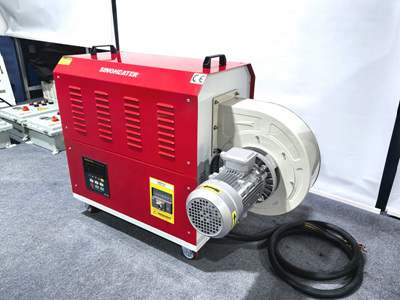After the hot air blower is used in a direct sunlight environment, anti-aging maintenance measures need to be taken to extend the equipment’s service life and ensure stable performance. The specific measures are as follows:
First, the impact of direct sunlight on hot air blowers
Shell aging: Direct sunlight can cause the shell materials of the hot air blower (such as plastic and rubber) to undergo photoaging, leading to fading, brittleness, cracking, and a reduction in protective performance.
Internal component damage: High temperatures and ultraviolet rays may accelerate the aging of internal circuit boards and wire insulation layers, causing safety hazards such as short circuits and leakage.
Performance degradation: Long-term direct exposure to light may cause the internal temperature of the hot air blower to be too high, affecting the efficiency and lifespan of the heating elements, and reducing the outlet air temperature and air volume.
Second, anti-aging maintenance measures
1. Optimization of equipment storage and usage environment
Avoid direct sunlight: Store the hot air blower in a cool and dry place, and use a sunshade or sunshade cloth to block direct sunlight.
Ventilation and heat dissipation: Ensure good ventilation around the equipment to prevent accelerated aging of internal components due to high temperatures.
2. Enclosure protection
Cleaning and maintenance: Regularly wipe the casing with a soft cloth and clean water. Avoid using corrosive cleaners to prevent damage to the casing material.
Coating protection: For shell materials that are prone to aging, an anti-ultraviolet coating can be applied or a protective cover can be used to reduce the impact of direct sunlight.
3. Internal component inspection and maintenance
Circuit board inspection: Regularly check the circuit board for any signs of aging or cracking. Replace aged components if necessary.
Wire insulation layer inspection: Check whether the insulation layer of the wire is intact. If there is any damage, it should be replaced in time to prevent electric leakage.
Heating element maintenance: Clean the dust and dirt on the surface of the heating element to ensure heating efficiency and extend its service life.
4. Regular maintenance and inspection
Clean the filter screens: Regularly clean the filter screens at the air inlet and outlet to prevent dust from clogging and affecting the ventilation effect.
Lubrication maintenance: Regularly lubricate the bearings, motors and other components of the fan to reduce wear and extend service life.
Performance testing: Regularly test the performance indicators of the hot air blower such as the outlet air temperature and air volume to ensure the normal operation of the equipment.
5. Precautions for Use
Avoid prolonged continuous use: In a direct sunlight environment, avoid running the hot air blower continuously for a long time to prevent the internal temperature from getting too high.
Cut off the power in time: After use, turn off the power in time to prevent the equipment from continuing to operate without supervision.
Third, replacement of aged components
Shell replacement: If the shell is severely aged, showing signs of cracking, deformation, etc., it should be replaced in a timely manner to ensure the protective performance of the equipment.
Circuit board and wire replacement: For severely aged circuit boards and wires, they must be replaced in a timely manner to prevent potential safety hazards.
Heating element replacement: If the efficiency of the heating element decreases or it is damaged, it should be replaced in time to ensure the heating performance of the hot air blower.




